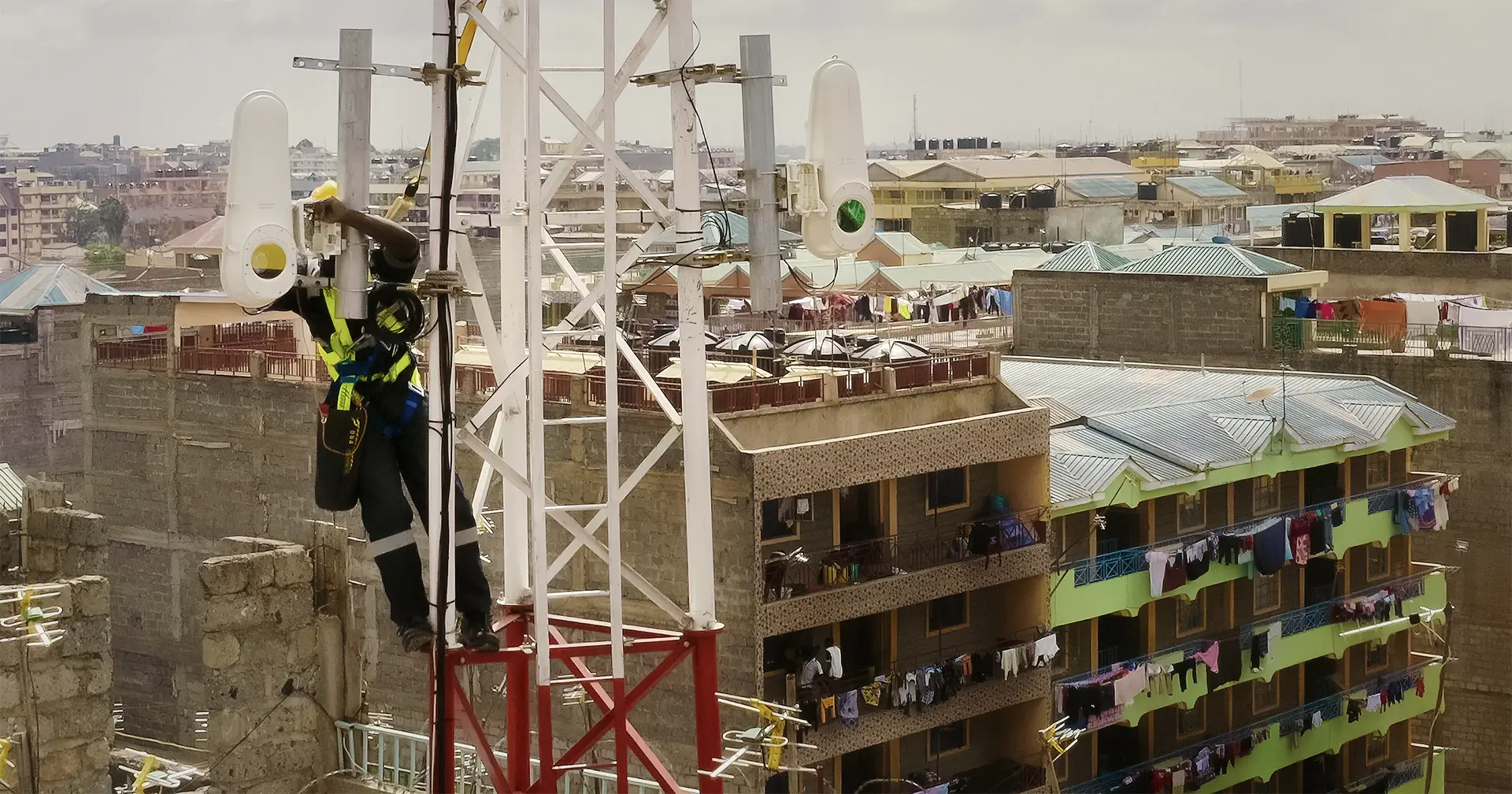


|
||
|
||

You may recall a number of years ago when Google experimented with delivering broadband from balloons in an effort labeled Project Loon. The project was eventually dropped, but a remnant of the project has now resurfaced as Taara—broadband delivered terrestrially by lasers.
Project Loon functioned by beaming broadband from dirigible to receivers on the ground, and Taara sprung out of the idea of using those same lasers for terrestrial broadband. Taara claims to be able to beam as much as 20 gigabits for 20 kilometers (12 miles). While that is impressive, the important claim is that the hardware is affordable and easy to install and align.
The Taara effort came out of the effort by Google founders Larry Page and Sergey Brin to form a division to work on moonshots—ideas that are futuristic sounding but that could someday make the world a radically better place. This resulted in the creation of X, the parent of Taara, which is the laboratory in charge of the moonshot ideas.
Taara sees this technology as a way to increase broadband access in areas with little or no broadband access. This is also envisioned as a technology that can provide better backhaul to cell towers and ISP hub sites. The most promising use of the technology is to bring a high-speed connection to the many small villages around the world that aren’t connected to broadband.
The X website includes several case studies of the technology. In the Congo, the radios were used to beam broadband across the Congo River to make a connection between Brazzaville and Kinshasa. This was a 4.8 kilometer radio hop that is far less expensive than building a fiber route by road of almost 400 kilometers. Within the first 20 days after the connection, the backhaul connection through Taara carried almost 700 terabytes of data.
Taara has already been deployed in thirteen countries, and Taara is working with major players to quickly expand the use of the technology. This includes deals with the Econet Group and its subsidiary Liquid Telecom in Africa, the ISP Bluetown in India, and Digicel in the Pacific Islands. Taara is also now working with Bharti Airtel, one of the largest telecom providers in India to ramp up distribution. India has hundreds of thousands of small villages that could be candidates for the technology.
In Africa, the roll-out of the technology started in Kenya, working with Liquid Telecom and the Econet Group. The radios are perceived as the best way to build backhaul in places where it is challenging or dangerous to build fiber networks, such as across rivers, across national parks, or in post-conflict zones.
There are still 2 billion people on the planet who are not connected to the Internet, and in most cases, one of the primary impediments to expanding Internet services is the lack of affordable and reliable backhaul. The Taara lasers seem like a solution to bring broadband to a huge number of places that have lacked connectivity.
Sponsored byWhoisXML API

Sponsored byCSC

Sponsored byIPv4.Global

Sponsored byVerisign

Sponsored byDNIB.com

Sponsored byVerisign

Sponsored byRadix

Today, Taara uses on/off keying in which the intensity of the light modulates the signal. Intersatellite and space-ground optical communication uses phase modulation and is capable of much faster links over much longer distances. See https://circleid.com/posts/20231101-space-ground-optical-laser-communication.
That’s the good news. The bad news is that today those terminals are much more complex and expensive than Taara’s current terminals. If the cost can be brought down, they might compete favorably with fiber and radio communication for high-speed terrestrial links in Africa, India, and elsewhere.